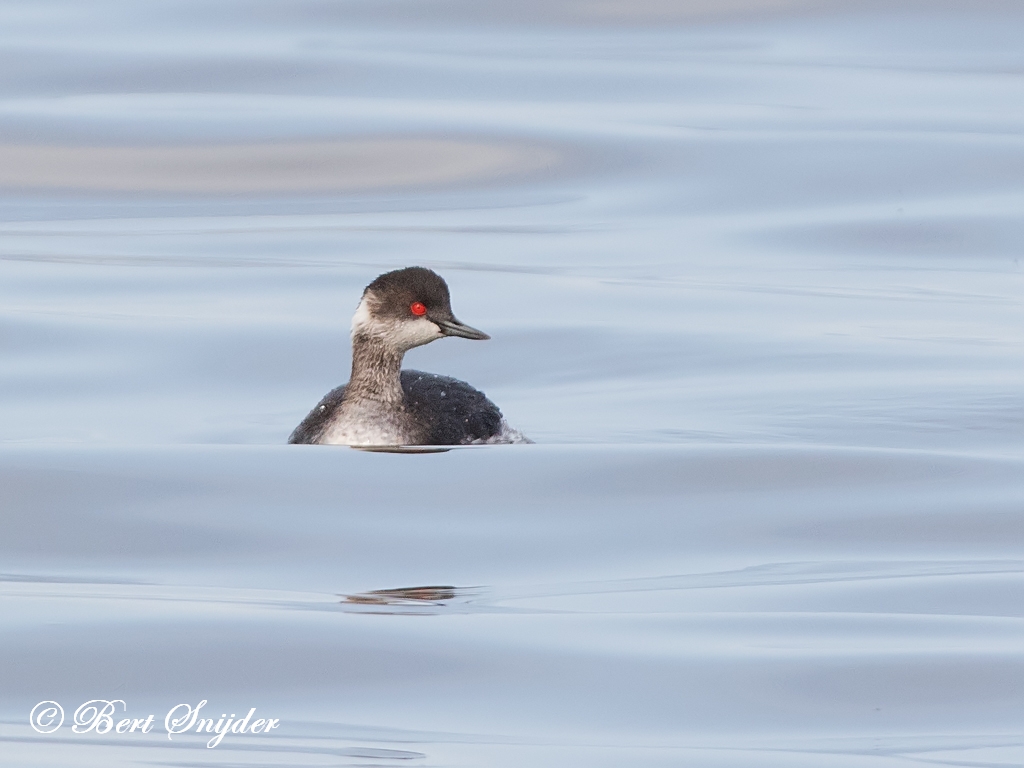Geoorde Fuut, Schwarzhalstaucher, Mergaulhão-de-pescoço-preto, Zampullín Cuellinegro
Spotted in the Alentejo region of Portugal. Black-necked Grebe sound
The Black-necked Grebe, Podiceps nigricollis, known in North America as the Eared Grebe, is a member of the grebe family of water birds. It occurs on every continent except Australia and Antarctica.
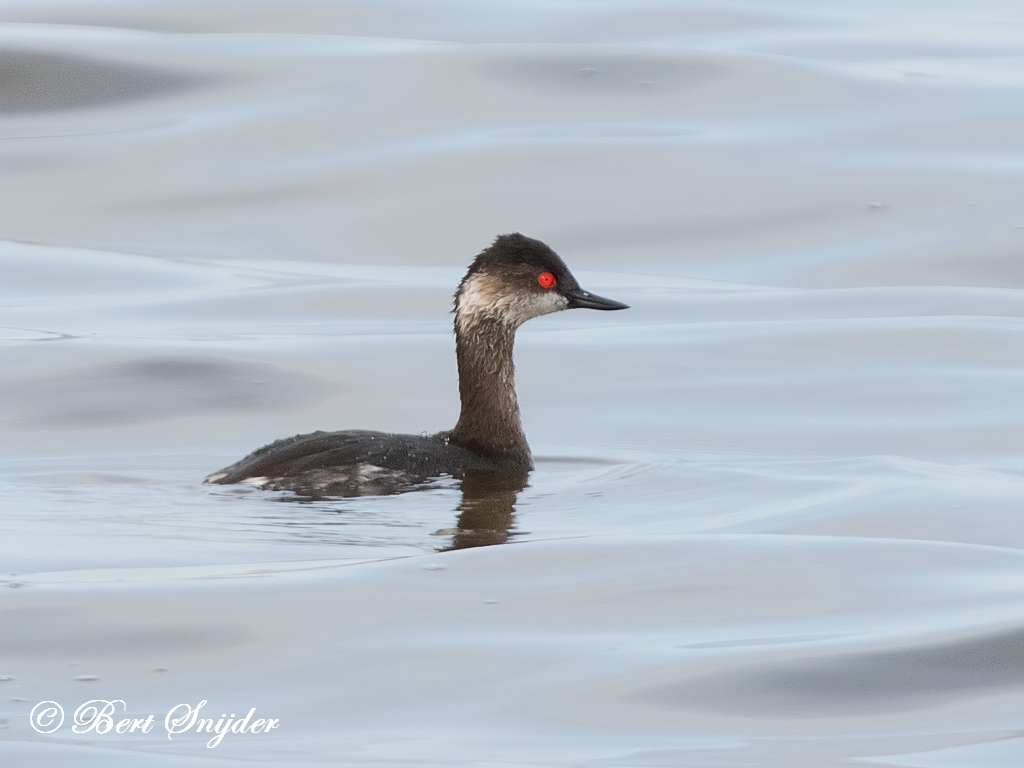
More photos at the bottom of this page.
The Black-necked Grebe is 28–34 centimetres (11–13 in) long. The adult is unmistakable in summer with a black head and neck and yellow ear tufts. In winter, this small grebe is white with a poorly defined black cap, which distinguishes it from the crisper-looking Slavonian Grebe (Horned Grebe in America).
In courtship the male gives a mellow poo-ee-chk call to the female.
This species breeds in vegetated areas of freshwater lakes across Europe, Asia, Africa, northern South America and the southwest and western United States. The North American subspecies, P. n. californicus is known as the Eared Grebe (or “eared diver”). These birds migrate in winter, mostly to the Pacific Coast where they range south to El Salvador on a regular basis; vagrants may occur as far as Costa Rica.
Black-necked Grebes of the nominate subspecies P. n. nigricollis in the cooler temperate regions of the Old World also winter further south, with many European birds moving to the Mediterranean area. The isolated southern African race, P. n. gurneyi is sedentary. It was named by South African ornithologist and author Austin Roberts in honour of the English bankers and amateur ornithologists John Henry Gurney and John Henry Gurney Jr..
Sadly the large breeding population in County Roscommon, Ireland discovered about 1915 fell victim to a drainage scheme in the late 1930s; at its peak there were an estimated 250 pairs.
The Black-necked Grebe is an excellent swimmer and diver, and pursues its prey underwater, eating mostly fish as well as small crustaceans, aquatic insects and larvae. It prefers to escape danger by diving rather than flying, although it can easily rise from the water.
Like all grebes, the Black-necked Grebe nests on the water’s edge, since its legs are set very far back and it cannot walk well. Usually two eggs are laid, and the striped young are sometimes carried on the adult’s back.
Interestingly, the eared grebe is essentially flightless for most of the year (9 to 10 months), and serves as an example of one of the most inefficient flier among avifauna. Generally, this bird avoids flying at all costs and reserves long distance flight exclusively for migration. However, when migrating, it will travel as much as 6,000 kilometres (3,700 mi) to reach prosperous areas which are exploited by few other species.
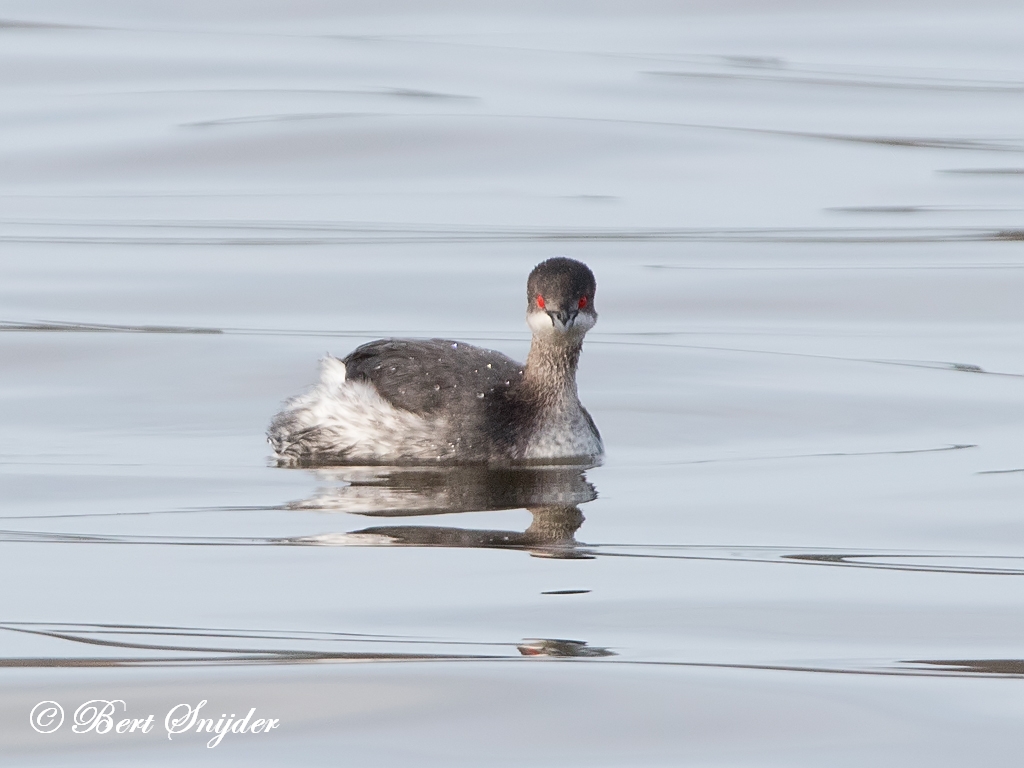
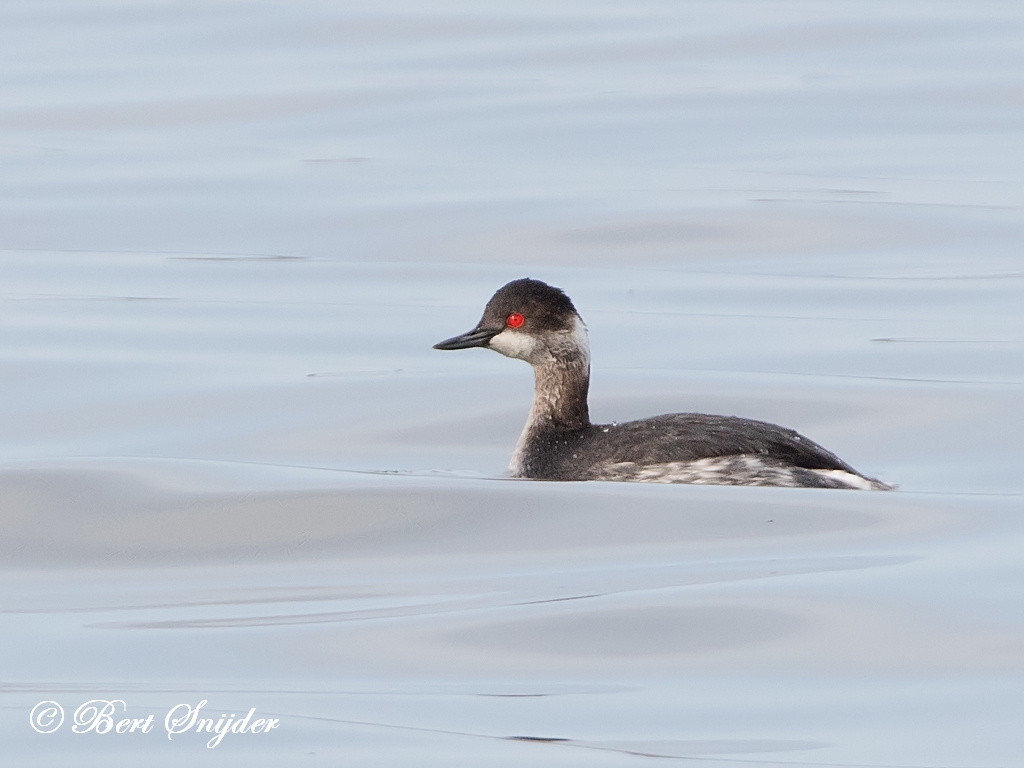
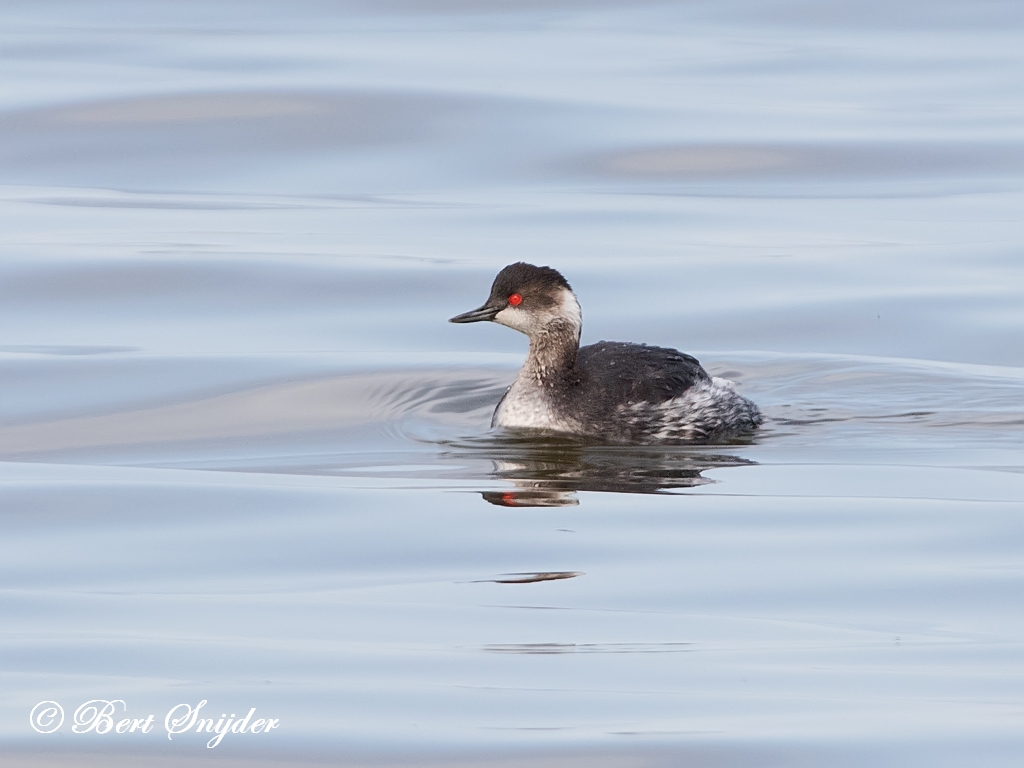
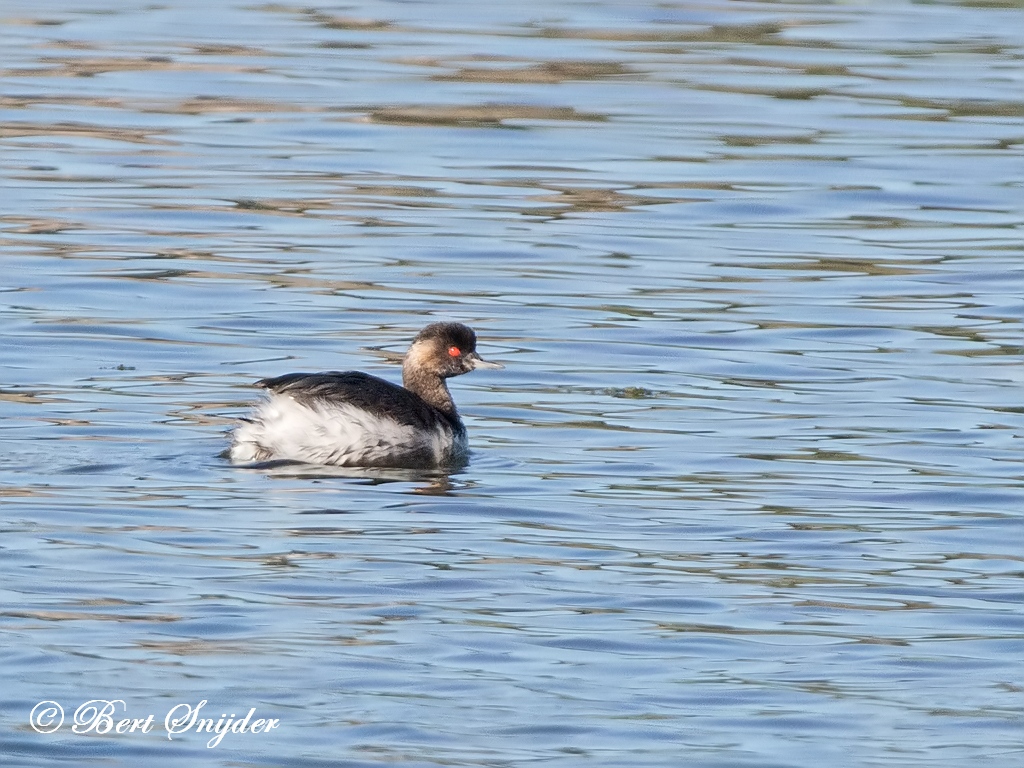
Other synonyms:
Afrikaans: Swartnekdobbertjie
Asturian: Parrulu Cuelluprietu, Semerguyu Oreyudu
Breton: Ar plomer gouzoug du
Catalan: Cabussó collnegre, Cabussó coll-negre, Cabussonera
Catalan (Balears): Cabussonera
Valencian: Cabussó coll-negre
Czech: Potápka cernokrká
Welsh: Gwyach gwddfddu, Gwyach gyddfddu, Gwyach yddfddu
Danish: Sorthalset lappedykker
German: Schwarzhalstaucher
English: American Eared Grebe, Back-necked grebe, Black grebe, Blacknecked Grebe, Black-necked Grebe, Black-necked or Eared Grebe, Black-necked Podic, Black-necked Podiceps, Eared Grebe
Esperanto: Nigrakola grebo
Spanish: Somormujo de Cuello Negro, Zambullidor Mediano, Zambullidor Orejudo, Zampulín cuelinegro, Zampullin Cuellinegro, Zampullín Cuellinegro
Spanish (Costa Rica): Zambullidor Mediano
Spanish (Mexico): Zambullidor Orejudo
Estonian: Mustakael-pütt, mustkael-pütt
Basque: Cabussó collnegre, Txilinporta lepabeltz, Txilinporta lepabeltza
Finnish: Mustakaulauikku
Faroese: Hálssvarta gjør, hálssvørt gjør
French: Grèbe à cou noir, Grèbe à cou noire
Frisian: Swarthalsdûker
Irish: Foitheach Píbdhubh
Gaelic: Gobhlachan Dubh, Gobhlachan na h-Amhaiche Duibhe
Galician: Cabussó collnegre, Mergullón de pescozo negro
Manx: Eean kereen cleayshagh
Croatian: Crnogrli Gnjurac, Zlatouhi gnjurac
Hungarian: Feketenyakú vöcsök
Icelandic: Stargoði
Italian: Svasso piccolo
Japanese: hajirokaitsuburi, Hajiro-kaitsuburi
Cornish: Gryb conna du
Latin: Colymbus caspicus, Colymbus nigricollis, Podiceps caspicus, Podiceps nigricollis
Lithuanian: Juodakaklis kragas
Dutch: Geoorde Fuut
Norwegian: Svarthalsdykker
Polish: perkoz zausznik, Zausnik, zausznik
Portuguese: mergulhão de pescoço preto, Mergulhão-de-pesco, Mergulhão-de-pescoço-preto
Romansh: Sfunsella naira
Russian: Chernosheynaya Poganka
Scots: Gobhlachan dubh
Slovenian: crnogrli ponirek
Albanian: Kredharaku gushëzi
Serbian: Crnogrli (crnovrati) gnjurac, Crnogrli gnjurac, crnovrati gnjurac
Swedish: Svarthalsad dopping
Swahili: Kibisi Shingo-nyeusi
Travel Birdwatching Holiday Alentejo, Vacation Portugal for birders to see birds on your trip. Guided Birdwatching Tours & Trips.
